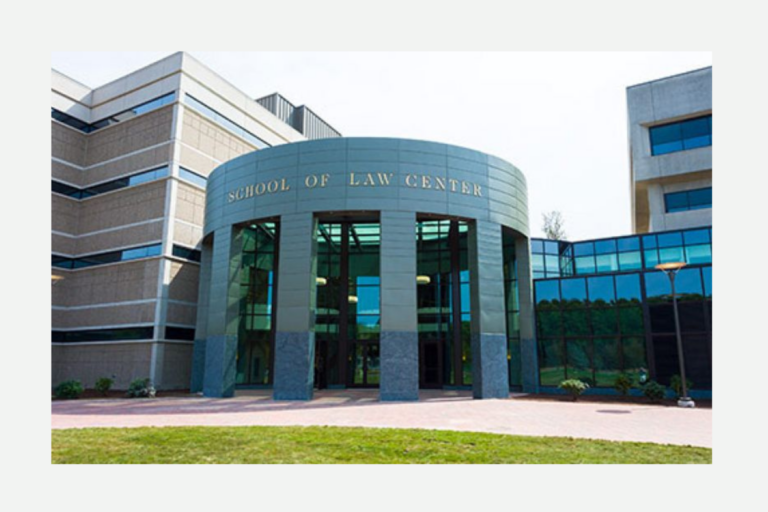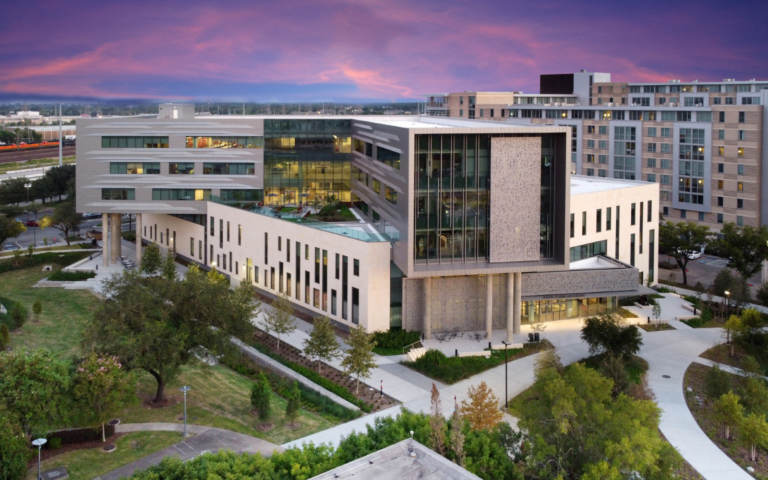Some likened last year’s law school admissions cycle, which saw a near-record surge of applicants, to a perfect storm, given how interest was fueled by a host of factors, such as the pandemic, the presidential election and social unrest.
Well, forget about hoarding canned goods and bottled water this year. Skies are clearing.
The number of applicants to the nation’s law schools is down 11% from last year as the cycle comes close to winding down. It’s about 95% through now. The Class of 2022 is taking shape without as much drama as last year, when students faced all-out war to gain coveted seats. Because of the larger number of applicants last year — many of whom were armed with stellar LSAT scores — competition was fierce.
“Early indicators are that we are returning to normality,” said Mike Spivey, founder of Spivey Consulting, a law school admissions consulting firm. “It’s like a pendulum. It’s swinging back.”
The last cycle, which saw the number of applicants rise 13%, was such an outlier that schools had problems managing it. Prospective students complained of being waitlisted for long periods of time as schools sorted through the avalanche of wannabe lawyers. Some schools even offered cash incentives for students to defer.
“This cycle is an understandable correction,” Spivey said, adding that it’s something that even most law schools welcome. No one likes to weather surprises such as last year, he said. Predictability helps schools plan and fill entering classes more efficiently.
“They covet normal data versus skewed data,” he said.
So far this year, they seem to have it. The number of applicants at this time stands at 59,459, compared to a year ago, when it was 67,123. The number of applications is at 418,048. Last year’s number was 465,625.
While the number of applicants is down from last year, there is an asterisk. Applicants are down from last year’s cycle, but not from previous past few years. For instance, as of May, the number of applicants this year is up 5.4% from 2019-2020.
Additionally, the number of students scoring in the upper bands of the LSAT may be down from last year, but it is still up from two years ago. The LSAT score ranges runs from 140-180, with the median score historically being 152.
On a blog post, Spivey Consulting noted the continuing disparity: “This cycle has fewer applicants in the highest scoring 165+ bands than last year, but it has thousands more than the pre-COVID cycles. Applicants in the highest scoring 175+ group are still double what they were in 2019-2020, and more than that for 2018-2019.”
Last year’s incredibly high LSAT scores added to the competitive nature of the cycle. A number of factors were believed to be behind it. For one, students had more time to study because the pandemic caused a lockdown. Also — again because of the pandemic — the test was administered remotely. That causes less test anxiety. Also, the test was shortened.
So even though the number of applicants is down, the quality of applicants remains pretty steep.
“It’s still a difficult cycle on a micro-level,” Spivey said. “It’s not like three years ago, when a 170 would have killed it for you.”
Applicants are dropping and so are the number of recent LSAT test-takers. So far this year, the number has fallen 40% from the same timeframe last year. The April test attracted a little less than 10,000 prospective students, a drop of nearly 50%.
The Law School Admissions Council (LSAC), which administers the test, said it expected both a drop in test-takers and law school applicants this year, given how unusually high the numbers were for last cycle. This year’s numbers beat pre-pandemic ones, so the recent year-over-year change is not a dramatic one in that context, said Susan L. Krinsky, LSAC’s executive vice president for operations and chief of staff.
Why are LSAT high scores higher than in pre-pandemic times? One factor may be prep, Krinsky said. There are more options available, including free or very reasonably priced ones. Students have become more aware of such tools. Also, they are studying more, LSAC surveys have shown. Students may have even bumped up their prep time this year because of how competitive last year’s cycle was.
And, yes, the remote test — which will continue until at least June 2023 — is a factor, she said. Students don’t have to worry about traveling to a test site, finding parking, standing in line with other nervous test-takers…
Last year’s surge in applicants caused more than just a rush on Tums by prospective students, it also caused a surge in enrollment. Some schools decided to increase class size, given the jump in qualified applicants. Indeed, the Class of 2021 was 12% larger than the Class of 2020.
Spivey does not expect enrollment to see a similar jump this year, given the drop in applicants. Plus, that enrollment spike didn’t bode well in several quarters. Faculty members, for one, do not like such bumps, Spivey said. Bigger class sizes mean more work. “Faculty don’t like to grade 12% more papers,” he said.
Also, concerns were raised about how strong the legal job market will be three years down the line. Legal hiring has been inching up of late, but that’s partly because the number of grads has been shrinking. Only last year did the number go up — but just marginally.
Today, some are raising alarms about a possible recession, Spivey said. If that happens and lingers, it could affect the Class of 2021 when they graduate in 2024, he said.
“It could be a grim scenario,” he said.
Mike Stetz is a contributing editor for National Jurist and preLaw.







